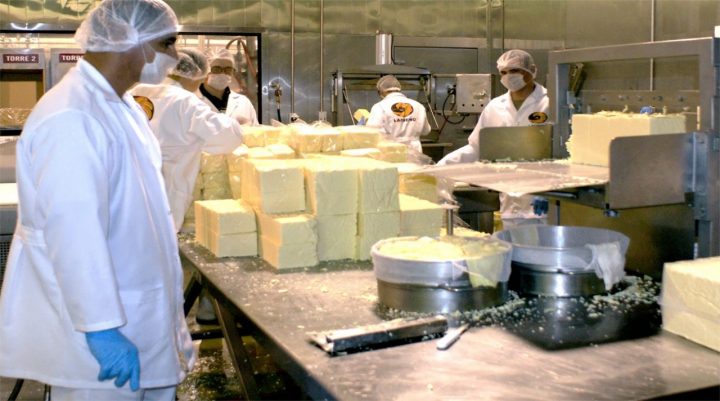Prices in that sector began the year more than twice as high as other industries. Profit margins have been reduced by up to 30%.
During January 2022, the inflation monthly of the sector of the food it reached 1.96%. This percentage is more than double that in other sectors, only surpassed by textiles, which had an increase of 3.57%.
half of the inflation national currently concentrates on the food products and this reality is affecting all the industries involved in local production.
The cost of fertilizers and agricultural and industrial inputs have skyrocketed in recent months, due to international problems related to logistics and higher oil prices.
Inflation hurts the sector
Christian Wahli, CEO of the National Association of Food and Beverage Manufacturers (Anfab), explained that, after the volume sold was reduced in 2020, the inflation It began to be one of the main headaches in the sector in 2021.
“With consumers with less income, there is not much room to cover the high costs through prices. The producers have had to play with the margin to avoid transferring all the impact to the consumer“, He said.
In other words, prices to the public would be greater if it had not been decided to gradually reduce the profit margins.
Vanessa Viteri, businesswoman in the food industrycommented that the decrease has been 30%, on average.
“There are products that had margins of 60% and fell to 45% and 40%; others who had 45% went to 30%. Formulation and presentation change strategies have also been established to reduce the impact of the increase in costs at price end,” he said.
Food will have a tough year
This reality will continue for at least most of 2022, which foresees a complex scenario.
“The industry of food going to have a difficult year. The inflation It is a global phenomenon that is affecting us. In addition, the situation is further complicated by the low national production of important goods such as wheat and corn”, Wahli pointed out.
Low demand affects several products
Between 2% and almost 11% has fallen the economic movement and the demand for various products. One of the most affected is the milkand the milk sector in general.
Two phenomena have caused the fall. On the one hand, the preferences of the consumers they’re changing. So-called substitute drinks such as milk soy, almond, rice. Even in Europe, there is currently a boom in milk of potato.
On the other hand, it also affects the complete non-reactivation of sectors such as restaurants and hotels; in addition, of the lower sales of small containers for lunch boxes, school snacks and consumption in offices.
Leonardo Flores, producer dairyexplained that the situation in the countryside is further complicated by informality, the lack of technology and technical support for small and medium-sized farmers, and the mistaken price control policy that does not generate incentives to improve productivity.
Oil and sugar suffer price collapse
Another sector with a significant fall, of 4.41%, is that of oils. This is directly related to the crisis that restaurants have been experiencing since the start of the pandemic. This crisis intensified strongly at the beginning of 2022 and to date it has cost at least 40% of jobs.
Also, the collapse in sales of products such as sugar (more than 10%), has also affected the performance of the food sector as a whole. In the latter case, the change in consumption patterns towards healthier alternatives, and the fight against sugary products, have had a great impact. (JS)
Without good practices and little organic offer
Christian Wahli, executive president of the National Association of Food and Beverage Manufacturers (Anfab), explained that the growth of the sector, especially abroad, is hampered by the lack of quality in the production in the field.
Barely 1% of agricultural companies have certification in Good Agricultural Practices. In addition, there are large gaps in technology, insecticide and pesticide management, and water quality.
“No one controls fresh produce. But for us, they check every can, container and bag,” she said.
This situation means that not all the opportunities generated by the increasing demand for organic products are being taken advantage of.
Space has been gained with these products in markets such as the European Union, but production is still small compared to the rest of the sector’s supply.
Si se incluye a toda la cadena de valor (industria, agro, restaurantes y turismo), las ventas crecieron menos del 1% durante el año pasado.


















